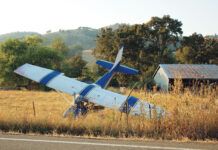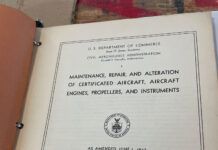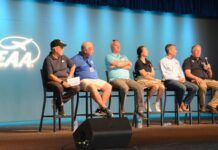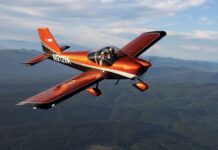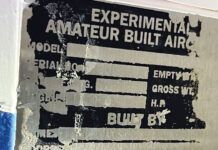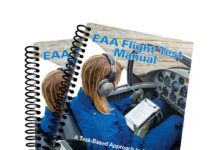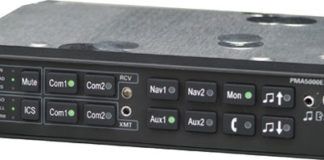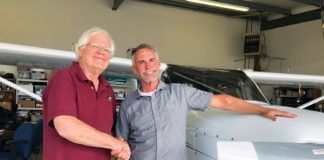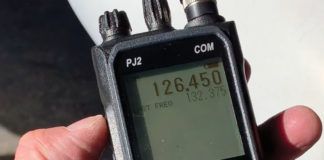When I was young, dreaming of being old enough to solo, then old enough to get my private, I carried around an FAR/AIM book (probably one that was out of date and given to me by an older pilot when he got a new one) and spent my free time reading the details of rules and procedures. Pretty pathetic for a young high school aged male, but airplanes were already deep in my blood, and I didn’t have any money to spare for socializing.

That habit of burrowing into the regs never really left me, and I find it interesting to dig out little tidbits here and there that don’t initially make sense or that seem to have been shoehorned in to satisfy some special interest. When you stop to think about them, however, they actually serve to make certain aviation activities more affordable or even, frankly, possible. It turns out that the rules aren’t always there to tell you what you can’t do—sometimes, that actually help you out!
Take, for instance, the rule about ELTs. FAR 91.207 lays out the requirement for an attached Emergency Locator Transmitter in U.S. registered aircraft. It basically says that you have to have one of the little orange boxes, and it has to be checked and have fresh batteries regularly. Every pilot knows that. But…when don’t you need one? Paragraph (f) covers this in detail, and most of these exceptions are temporary, such as for flight testing, R&D, ag flying…However, if you look at subparagraph (9), you’ll find that if you have a single-seat aircraft, you never have to have one installed! I guess they figure if a pilot (all by themselves) is stupid enough to crash, they deserve not to be found. Hey, single-seaters are small, and the weight of an ELT can be used for something else. And you don’t have to change those batteries every two years!
As I have written here and on our web site, I am currently building a little single-seat SubSonex. It’s a fun machine, but the fact that it is powered by a turbojet means that certain rules we all ignored as piston pilots come into play. For instance, FAR Part 61.58 requires annual proficiency checks for pilots operating (among other things) a turbojet-powered aircraft. Basically, it says that if you’re flying a jet as PIC, you need to have a proficiency check ride once a year. This can get onerously expensive for the individual operator (although it’s not a bad idea from a safety standpoint), and it is something that you have to add to your budget if you’re thinking of owning such a plane. But looky here…way down in paragraph (f), some FAA official took pity on us poor homebuilders with single-seat jets. “This section will not apply to a pilot authorized by the Administrator to serve as pilot in command in experimental turbojet-powered aircraft that possess, by original design, a single seat, when operating such single seat aircraft.” Whew—saved by the subparagraph. I can remove finding a two-seat jet and instructor from my annual operating budget. Fine print taketh—but it also giveth!
On the other hand, it does pay to keep your eye on changing rules and FAA orders. Many homebuilders who think in terms of the only airplane they ever built (or ever will build) might think that the operating limitations issued to Experimental/Amateur-Built aircraft are all the same and always will be. As I pointed out a few months ago in similar musings, that’s just not true. Decades ago, they fit on a single page and seemed to be made up by each local FAA inspector. That changed with standardization, but the ops lims issued for many years still fit on two pages and didn’t really cramp anyone’s style.
Current-day operating limitations are now generated by computer from a list of standardized line items that are selected when the inspector inputs the parameters of the airplane they are licensing. Many items are standard for all experimentals. Others depend on how it is going to be used, the type of powerplant, and where it is going to be flown. In densely populated parts of the country, for instance, Phase 1 geographic restrictions are fairly small and close to the home field . That’s OK—there are usually lots of runways in the area. Out West, it is not uncommon to see 100+ mile radius Phase 1 areas. Because airports are so few and far between, it takes that distance to put more than a couple within reach.
The template for modern operating limitations is revised on a periodic basis—recently about every two or three years. It pays to know what is in the template, even if you already have a set of ops lims for your airplane, because on occasion you might be encouraged to get a new set, and you might be signing up for restrictions that are new since your original set was issued. For instance, the latest ops lims have a paragraph that requires all life and overhaul time limits recommended by manufacturers to be observed. In simple terms, that means that if you have a Lycoming engine with a TBO of 2000 hours or 12 years (whichever comes first), you must have it overhauled when you reach the first of those limits. This limitation is not imposed on a certified aircraft operated under Part 91, by the way. So if you have old ops lims without that phrase, you might not be enthusiastic about having yours updated—something that generally has no downside.
Yes, fine print is sometimes fun to read, sometimes, disheartening, and occasionally entertaining. It pays to carry the FARs around on your favorite electronic device and peruse them occasionally—if for no other reason that you might win a bar bet someday. And remember, FAR Part 91.205 (Powered Aircraft Instrument and Equipment Requirements) starts with the caveat, “Aircraft with a standard category U.S. Airworthiness certificate,” which means that unless called out specifically in your operating limitations (such as for night or IFR operations), none of the equipment requirements apply. I know of at least a couple of guys that will dispute that—but it’s there in black and white, for anyone to read.


